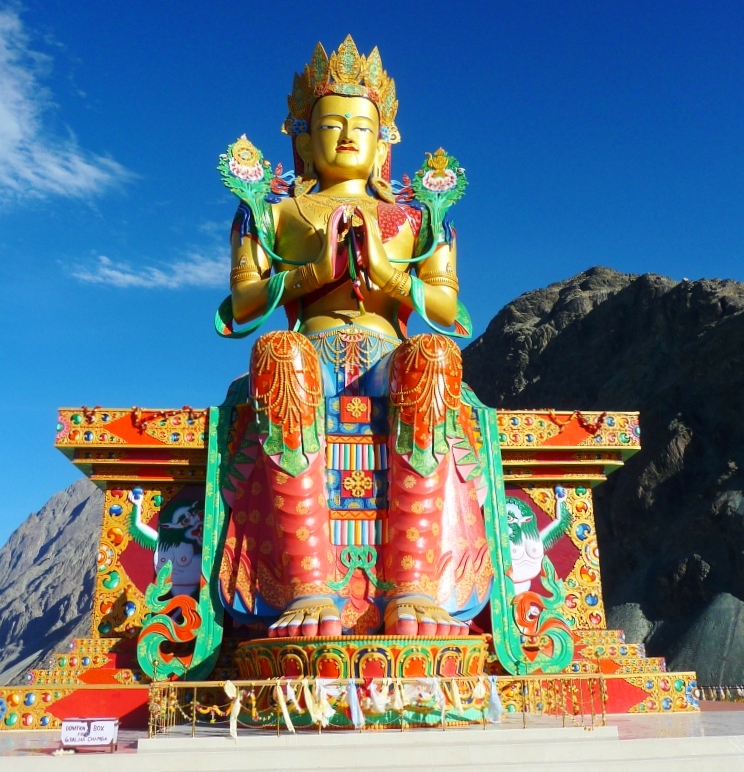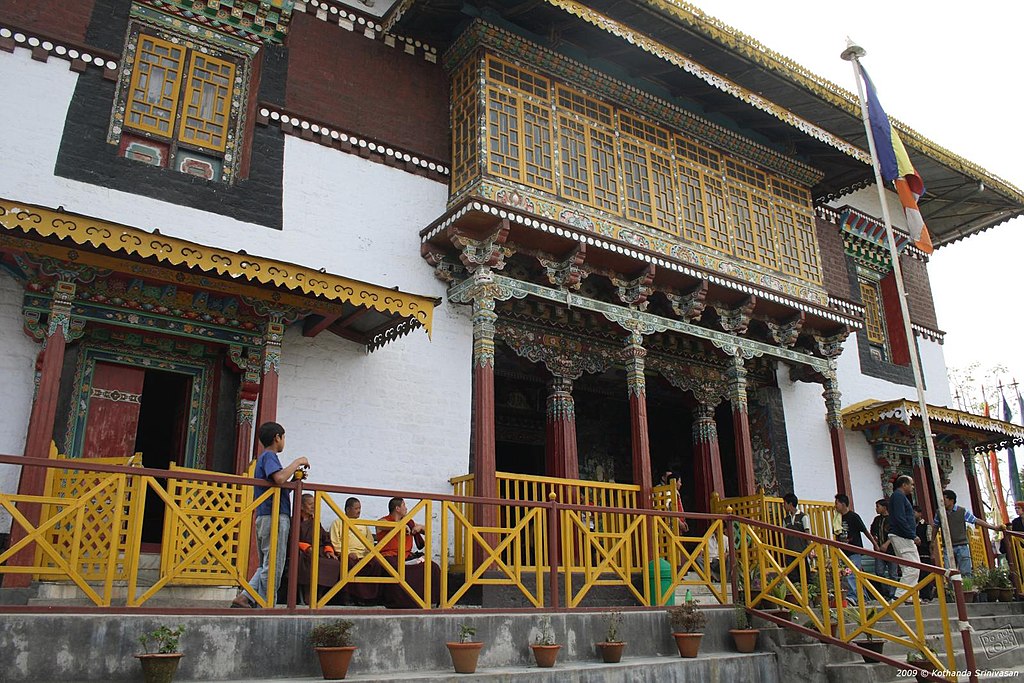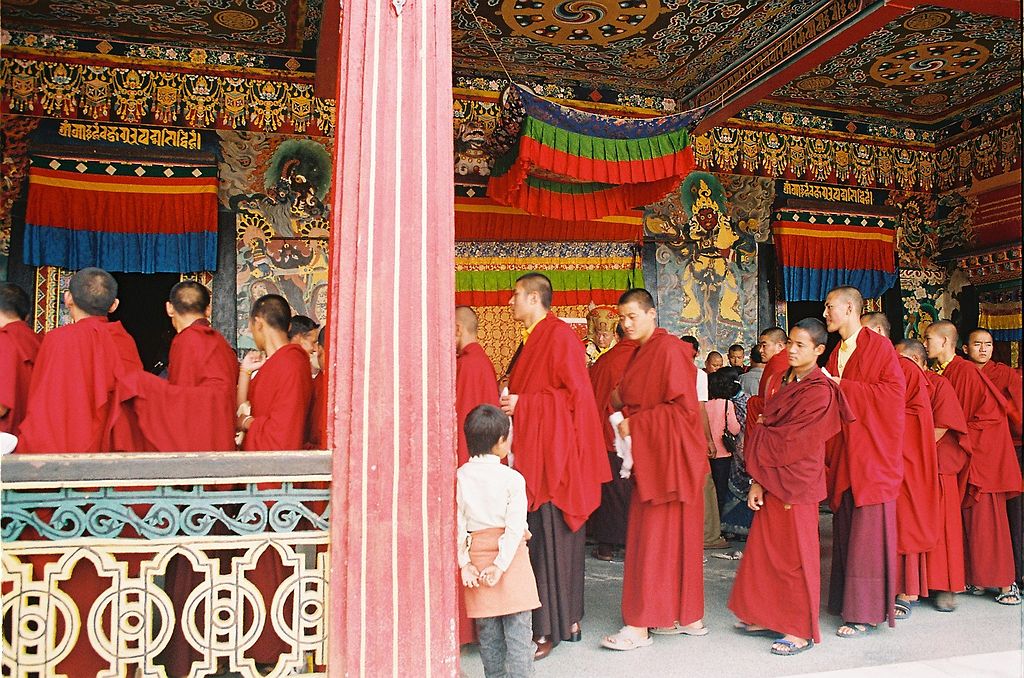Tibetan culture, rich in Buddhist traditions, art, music, and cuisine, offers travelers a unique window into a world where spirituality and daily life blend seamlessly. While Tibet itself is under Chinese administration, its cultural influence spreads widely in India and Nepal, where Tibetan communities have preserved their heritage. This guide will take you through the top destinations, experiences, and tips for exploring Tibetan culture in these countries.
India – Tibetan Cultural Hubs
Dharamshala & McLeod Ganj (Himachal Pradesh)
Tsuglagkhang Complex –
Dalai Lama’s temple and residence.
Norbulingka Institute – Preserves Tibetan arts, crafts, and Thangka painting.
Bhagsu Waterfall & Bhagsunath Temple – Scenic spots near Tibetan settlements.
Tushita Meditation Centre –
Workshops on meditation and Buddhist philosophy.
Leh & Ladakh (Jammu & Kashmir)
Hemis Monastery –
 Famous for Hemis festival, mask dances, and murals.
Famous for Hemis festival, mask dances, and murals.Thiksey Monastery –
 Himalayan-style monastery with giant Maitreya Buddha statue.
Himalayan-style monastery with giant Maitreya Buddha statue.Diskit Monastery (Nubra Valley)
 – Stunning mountain views, prayer flags, and cultural interactions.
– Stunning mountain views, prayer flags, and cultural interactions.Alchi Monastery – 11th-century monastery with ancient wall paintings.
Sikkim
Rumtek Monastery –
 Seat of the Karmapa Lama, rich in Tibetan rituals.
Seat of the Karmapa Lama, rich in Tibetan rituals.Pemayangtse Monastery –
 Architectural beauty and panoramic views.
Architectural beauty and panoramic views.Tsomgo Lake & Gurudongmar Lake – Nearby high-altitude lakes reflecting Tibetan traditions.
Bodh Gaya (Bihar)
Mahabodhi Temple Complex –
 Visit Tibetan-style monasteries around the Bodhi tree.
Visit Tibetan-style monasteries around the Bodhi tree.
5. Karnataka
Karnataka, particularly the Mysuru and Coorg regions, is home to some of the largest Tibetan settlements in India, making it a key destination to experience Tibetan culture outside Tibet.
Bylakuppe Tibetan Settlement –
 The largest, with Namdroling (Golden Temple), Sera Monastery, and Tashi Lhunpo Monastery.
The largest, with Namdroling (Golden Temple), Sera Monastery, and Tashi Lhunpo Monastery.Mundgod Settlement – Houses Dolma Ling Monastery and Gaden Samtenling Monastery, preserving Tibetan art, rituals, and education.
Nepal – Tibetan Cultural Hubs
Kathmandu Valley
Boudhanath Stupa –
 Watch monks in prayer, spin prayer wheels, and attend rituals.
Watch monks in prayer, spin prayer wheels, and attend rituals.Swayambhunath (Monkey Temple) –
 Panoramic view of Kathmandu, Tibetan Buddhist influence.
Panoramic view of Kathmandu, Tibetan Buddhist influence.Kopan Monastery –
Meditation courses, teachings, and yoga retreats.
Pokhara
Tibetan Refugee Camps & Cultural Centers – Learn handicrafts, Thangka painting, and traditional music.
Sarangkot –
 Sunrise view with Tibetan prayer flags framing the Annapurna range.
Sunrise view with Tibetan prayer flags framing the Annapurna range.
Mustang (Upper Mustang / Lo Manthang)

Ancient walled city with Tibetan Buddhist monasteries and caves.
Participate in traditional festivals, local dances, and prayer ceremonies.
Lumbini

Visit Tibetan-style monasteries built by Tibetan communities.
Meditation and yoga retreats near Buddha’s birthplace.
🎨 Things to Experience
Monastery Life & Meditation Retreats –
 Learn meditation, chanting, and Tibetan Buddhism teachings.
Learn meditation, chanting, and Tibetan Buddhism teachings.Festivals & Rituals –
 Losar (New Year), Hemis Tsechu, Saga Dawa, Butter Lamp Festival.
Losar (New Year), Hemis Tsechu, Saga Dawa, Butter Lamp Festival.Tibetan Art & Handicrafts Workshops – Thangka painting, carpet weaving, mask-making.
Cooking Tibetan Cuisine – Make momos, thukpa, butter tea, and traditional sweets.
Spiritual Trekking – Trek to high-altitude monasteries in Ladakh or Mustang.
Prayer Wheel Circulation –
 Spin prayer wheels at stupas for blessings.
Spin prayer wheels at stupas for blessings.Cultural Homestays – Stay with Tibetan families to experience daily rituals and lifestyle.
Participate in Chanting Sessions – Morning or evening chanting with monks at monasteries.
🎉 Tibetan Festivals to Experience
Losar (Tibetan New Year) – February/March; celebrated in monasteries across India and Nepal.
Hemis Festival – Ladakh; colorful masked dances, traditional music, and rituals.
Saga Dawa – Marks Buddha’s birth, enlightenment, and death; candlelight ceremonies and prayers.
Butter Lamp Festival –
 Nepal; monks light butter lamps for blessings and merit.
Nepal; monks light butter lamps for blessings and merit.
🍴 Tibetan Food Highlights
Momos –
 Steamed or fried dumplings with vegetable, chicken, or yak filling.
Steamed or fried dumplings with vegetable, chicken, or yak filling.Thukpa – Tibetan noodle soup, often spicy and warming in mountain climates.
Tibetan Bread (Balep, Tingmo) – Served with stews or butter tea.
Butter Tea – Traditional drink made with yak butter and salt, a Himalayan staple.
🛫 Travel Tips
Best Time to Visit:
India (Himachal, Ladakh, Sikkim): April to October.
Nepal (Kathmandu, Pokhara, Mustang): March to May & September to November.
Accommodation: Monastery guesthouses, homestays, and boutique hotels.
Cultural Etiquette:
Remove shoes before entering monasteries.
Walk clockwise around stupas.
Ask before photographing monks or locals.
Local Transport: Shared jeeps in Himachal & Ladakh, taxis in Nepal, trekking for remote areas.
🛍️ Additional Places to Shop & Explore
Tibetan markets in McLeod Ganj, Leh, and Kathmandu – Prayer flags, jewelry, Thangka paintings, singing bowls.
Norbulingka Institute (Dharamshala) – Authentic Tibetan handicrafts and arts.
Pokhara Tibetan Refugee Handicraft Center – Carpets, wool products, and souvenirs.
🔗 Important Links for Tibetan Culture Travel
🛂 Tourist & Visa Information
India Tourist Visa – https://indianvisaonline.gov.in
Nepal Tourist Visa – https://online.nepalimmigration.gov.np
🏔️ Tibetan Monasteries & Cultural Centers (India)
Tsuglagkhang Complex (Dharamshala) – https://www.dalailama.com
Norbulingka Institute (Dharamshala) – https://www.norbulingka.org
Rumtek Monastery (Sikkim) – https://www.rumtek.org
🏔️ Tibetan Monasteries & Cultural Centers (Nepal)
Boudhanath Stupa, Kathmandu – https://boudhanathstupa.org
Kopan Monastery, Kathmandu – https://www.kopanmonastery.com
Tibetan Refugee Handicraft Center, Pokhara – https://www.tibetanrefugeespokhara.org
🎨 Cultural & Travel Resources
Himalayan Travel Guides – https://www.himalayatravel.com
Trekking & Tours in Ladakh and Mustang – https://www.tibetanhimalayanadventures.com
Nepal Cultural Tours & Experiences – https://www.nepaltourism.com
📚 Recommended Books for reading while travelling
Reading about Tibetan history, spirituality, and art can greatly enrich your travel experience. Here are some must-reads:
“The Art of Happiness” by Dalai Lama – Insights into Tibetan Buddhist philosophy and daily practice.
“Tibet, Tibet: A Personal History of a Lost Land” by Patrick French – A deep dive into Tibet’s history and culture.
“Seven Years in Tibet” by Heinrich Harrer – A classic memoir about life in Tibet and encounters with the Dalai Lama.
“The Tibetan Book of Living and Dying” by Sogyal Rinpoche – Spiritual guidance and Buddhist perspectives on life and death.
“Tibetan Souvenirs: Handicrafts and Art” by Sarah Harding – For travelers interested in Thangka paintings, carpets, and handicrafts.
“Into the Silence” by Wade Davis – Explores Himalayan cultures, including Tibetan traditions and rituals.
The Tibetan people are known for their resilience, warmth, and deep spirituality. Despite displacement and challenges, they have preserved their rich cultural heritage, art, and religious traditions across India and Nepal. Visitors are often struck by their hospitality, peaceful demeanor, and dedication to community and faith, making every interaction a meaningful part of the journey into Tibetan culture.
Exploring Tibetan culture in India and Nepal is more than sightseeing—it’s a journey into spirituality, art, and history. From serene monasteries to bustling handicraft markets and traditional cuisine, travelers leave with not just memories but a deep sense of connection to the Tibetan way of life.
Read: Best Places to See in Dharamshala – A complete travel guide
Recent Posts
- Best Dubai Hotels & Resorts for Couples – Luxury & Romance in One Stay
- Where to Celebrate New Year 2025 in India – Ultimate Party Guide
- Best Romantic Resorts in Dehradun for Couples | Luxury & Nature Escapes
- Ultimate Guide to the Best National Parks in the USA for Adventure Travelers
- Malta Travel Secrets – Famous Spots & Hidden Local Favorites
- Best Hotels in Malta Guide – Compare Amenities, Features & Prices
- Your Ultimate Guide to Oktoberfest: Food, Beer & Activities

